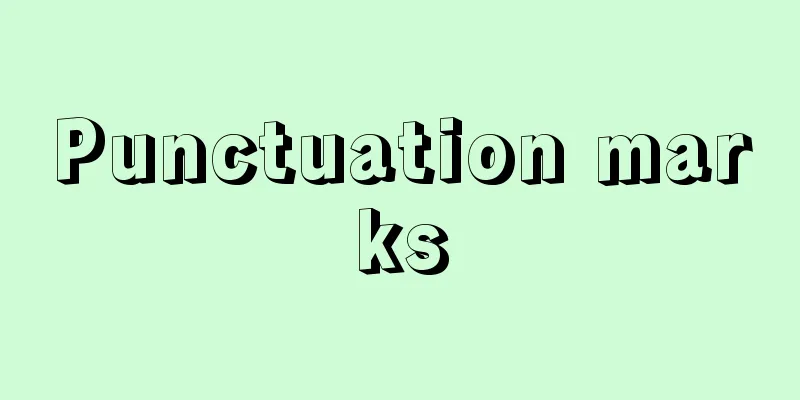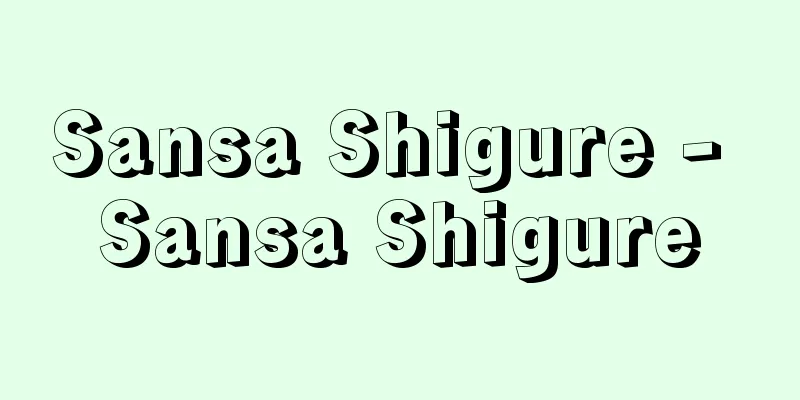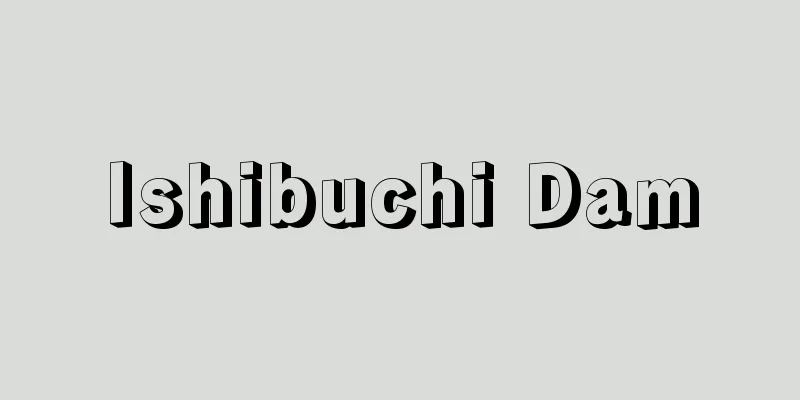Punctuation marks

|
In written language, symbols used to indicate the structure of a sentence or the relationship between words and phrases in order to correctly convey the writer's intention. They are also called punctuation marks. In the narrow sense, they refer to the full stop (maru) "." and the comma (ten) ",", and sometimes the parallel point (nakaguro, nakaten) "・" is added to these. In the broad sense, in addition to the narrow sense, they also include quotation marks, brackets " ", double quotation marks 『 』, parentheses ( ), square brackets [ ], question marks?, exclamation marks!, leaders, dashes, etc. In addition, the following characters are also used in horizontal text: period (.), comma (,), colon (:), semicolon (;), hyphen (-), and quotation mark ("). The use of punctuation marks has not yet been established in the Japanese language, and various methods have been proposed. As an example, the following is a simplified version of the principles set out in "How to Use Punctuation Marks" by the Ministry of Education (now the Ministry of Education, Culture, Sports, Science and Technology) (included in the Ministry of Education's "How to Express the Japanese Language," December 1950) (this may not be exactly the same as the original): (1) "." is always used when a sentence has been completely stated. It is used in " " and ( ), and also in lists of items that end with "to do, thing, person, time, or occasion." However, it is not used in the following cases: (a) when listing simple phrases such as titles or slogans, (b) when listing only the names of things, and (c) when following something that has been completely stated with "and" without using " ". (2) "," should be used in places in a sentence where there is a risk of misunderstanding if the continuation of words is not made clear, and between words of the same kind that are placed side by side on an equal footing. However, "," should not be used when placing titles, slogans, or simple phrases side by side. (3) "・" is used when arranging nouns in parallel. However, it is not used when listing words other than nouns or arranging numerals in parallel (use ","). (4) ( ) is used after a word or sentence to add a note about it. (5) " " is used when quoting a conversation or phrase, or when there is a phrase that calls attention to something. (6) 『 』 is used when quoting further words within 『 』. [Masayuki Tsukimoto] "Continued Japanese Grammar Lectures 2: Notation" by Saiga Hideo et al. (1958, Meiji Shoin)" ▽ "Correct Japanese Lectures 3: Notation" by Kato Akihiko et al. (1971, Meiji Shoin)" ▽ "Modern Composition Lectures 6: Letters and Notation" by Kobayashi Yoshinori et al. (1977, Meiji Shoin)" ▽ "Japanese Lectures 4: Vocabulary and Punctuation" by Sugimoto Tsutomu (1979, Ohfusha)" [Reference] | | |Source: Shogakukan Encyclopedia Nipponica About Encyclopedia Nipponica Information | Legend |
|
書きことばにおいて、書き手の意図を正しく伝えることを目的として、文の構造や語句相互の関係を示すための記号。くぎり符号ともいう。狭義には、句点〈まる〉「。」と読点(とうてん)〈てん〉「、」をさし、これに並列点〈なかぐろ、なかてん〉「・」を加えることもある。広義には、狭義のものに加えて、〈かぎ、かぎかっこ〉「 」、〈二重かぎ〉『 』、〈丸かっこ、パーレン〉( )、〈角がっこ〉〔 〕、〈疑問符〉?、〈感嘆符〉!、〈リーダー〉……、〈ダッシュ〉――なども含める。 また、横書きの文章では以下のようなものも用いられる。〈ピリオド〉.、〈コンマ〉,、〈コロン〉:、〈セミコロン〉;、〈ハイフン〉‐、〈引用符〉“ ”。 句読点の用い方(句読法)は、日本語についてはいまだ確立しておらず、種々の方式が提唱されているが、その一例として文部省(現文部科学省)による「くぎり符号の使い方」(文部省『国語の書き表わし方』付載、1950年12月)に示された原則を簡略化して次に掲げる(かならずしも原文のとおりではない)。 (1)「。」は、一つの文を完全に言い切ったところにかならず用いる。「 」や( )の中でも用い、また「……すること・もの・者・とき・場合」などで終わる項目の列記にも用いる。ただし、(a)題目・標語など簡単な語句を掲げる場合、(b)事物の名称だけを列記する場合、(c)言い切ったものを「 」を用いずに「と」で受ける場合、には用いない。 (2)「、」は、文の中でことばの切れ続きを明らかにしなければ誤解されるおそれのあるところに用い、また対等の関係で並ぶ同じ種類の語句の間に用いる。ただし、題目や標語、簡単な語句を並べる場合には使用しない。 (3)「・」は、名詞の並列の場合に用いる。ただし、名詞以外の語句を列挙したり、数詞を並列する場合には用いない(「、」を用いる)。 (4)( )は、語句や文の後ろに、それについて注記する場合に用いる。 (5)「 」は、会話や語句を引用するとき、あるいは注意を喚起する語句のある場合に使用する。 (6)『 』は、「 」の中にさらに語句を引用する場合に用いる。 [月本雅幸] 『斎賀秀夫他著『続日本文法講座2 表記篇』(1958・明治書院)』▽『加藤彰彦他著『講座正しい日本語3 表記篇』(1971・明治書院)』▽『小林芳規他著『現代作文講座6 文字と表記』(1977・明治書院)』▽『杉本つとむ著『日本語講座4 語彙と句読点』(1979・桜楓社)』 [参照項目] | | |出典 小学館 日本大百科全書(ニッポニカ)日本大百科全書(ニッポニカ)について 情報 | 凡例 |
>>: Kutuzov, Mikhail Illarionovich
Recommend
Addressee - Atedokoro
1. The address of the person to whom mail or other...
British Malaya - Igirisuriyomaraya
…As a result, in 1896, the four states of Perak, ...
Embroidery
..."Shi" means to sew with a needle, an...
QSS - QSS
Quasi-stellar radio source : A stellar radio sourc...
Illustrated Biography of the Bodhisattva Gyoki
...The earthen pagoda he built at Oono-ji Temple ...
One subject, three tastes - Ikkasanshi
…The Spring and Autumn Annals has three schools o...
Reclusive poet
…His works such as “Returning to the Garden and t...
Wagner, Wieland (English spelling) WagnerWieland
…Around 1920, Adolphe Appia of Switzerland, who w...
Akebikonoha - Akebikonoha
A large moth belonging to the family Noctuidae in...
Takasaburo - Takasaburo
An annual plant of the Asteraceae family. The ste...
Appeal - Jokoku
In procedural law, an appeal is made to a court o...
armlet
…bracelet. Those worn on the upper arm are someti...
Cātta(■1)ār (English spelling) Cattanar
...In the two or three centuries following the es...
Wind Orchestra - Kangaku Okesutora
…It is a translation of the word “orchestra” and ...
Alaskan malamute
...Originating from Sakhalin, it is a sled dog. I...



![Kasai [river] - Kasai](/upload/images/67cb311c8f781.webp)





